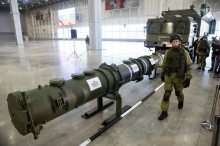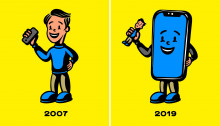Charisma

How many times have you heard someone say: “He (or she) has charisma.” Certain people seem to have it, while most of us think we don’t.
Not to put too fine a point on it, but all of us need at least a little bit of charisma. It’s how we influence people and get along in the world.
That’s why I found this article, “Becoming Charismatic, One Step at a Time,” so fascinating. Here’s how it begins:
Ask people to name someone they find charming and the answers are often predictable. There’s James Bond, the fictional spy with a penchant for shaken martinis. Maybe they’ll mention Oprah Winfrey, Bill Clinton or a historical figure, like the Rev. Dr. Martin Luther King Jr. or Mahatma Gandhi. Now ask the same people to describe, in just a few seconds, what makes these charmers so likable.
It’s here, in defining what exactly charisma is, that most hit a wall. Instinctually, we know that we’re drawn to certain people more than others. Quantifying why we like them is an entirely different exercise.
The ancient Greeks described charisma as a “gift of grace,” an apt descriptor if you believe likability is a God-given trait that comes naturally to some but not others. The truth is that charisma is a learned behavior, a skill to be developed in much the same way that we learned to walk or practice vocabulary when studying a new language. Other desirable traits, like wealth or appearance, are undoubtedly linked to likability, but being born without either doesn’t preclude you from being charismatic.
For all the work put into quantifying charisma — and it’s been studied by experts through the ages, including Plato and those we talked to for this piece — there are still a lot of unknowns. There are, however, two undisputed truths.
The first is that we are almost supernaturally drawn to some people, particularly those we like. Though this is not always the case; we can just as easily be drawn in by a charismatic villain.
The second truth is that we are terrible at putting a finger on what it is that makes these people so captivating. Beyond surface-level observations — a nice smile, or the ability to tell a good story — few of us can quantify, in an instant, what makes charismatic people so magnetic.









